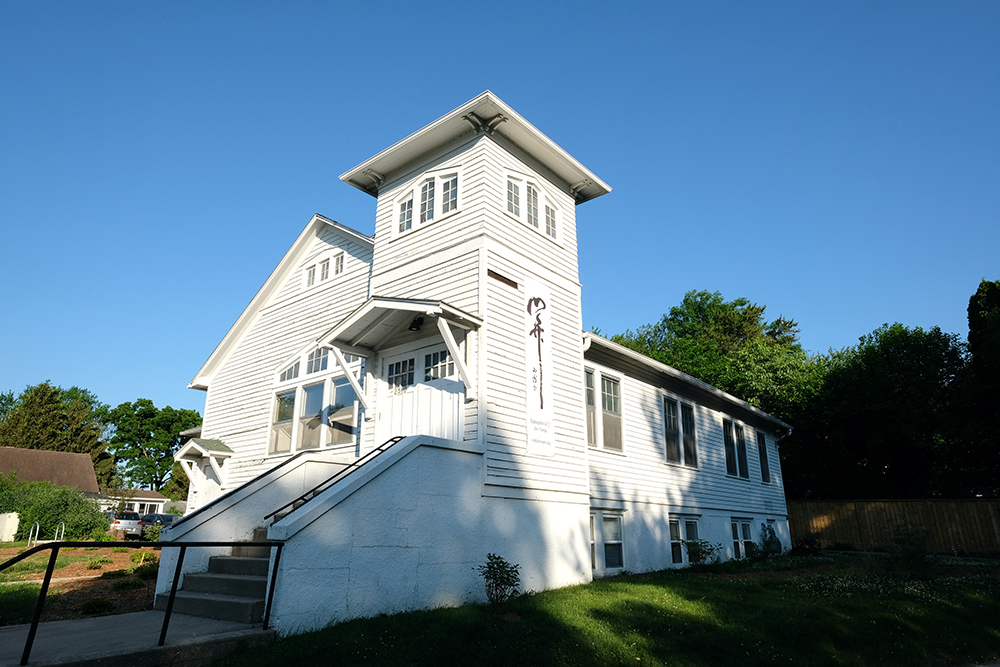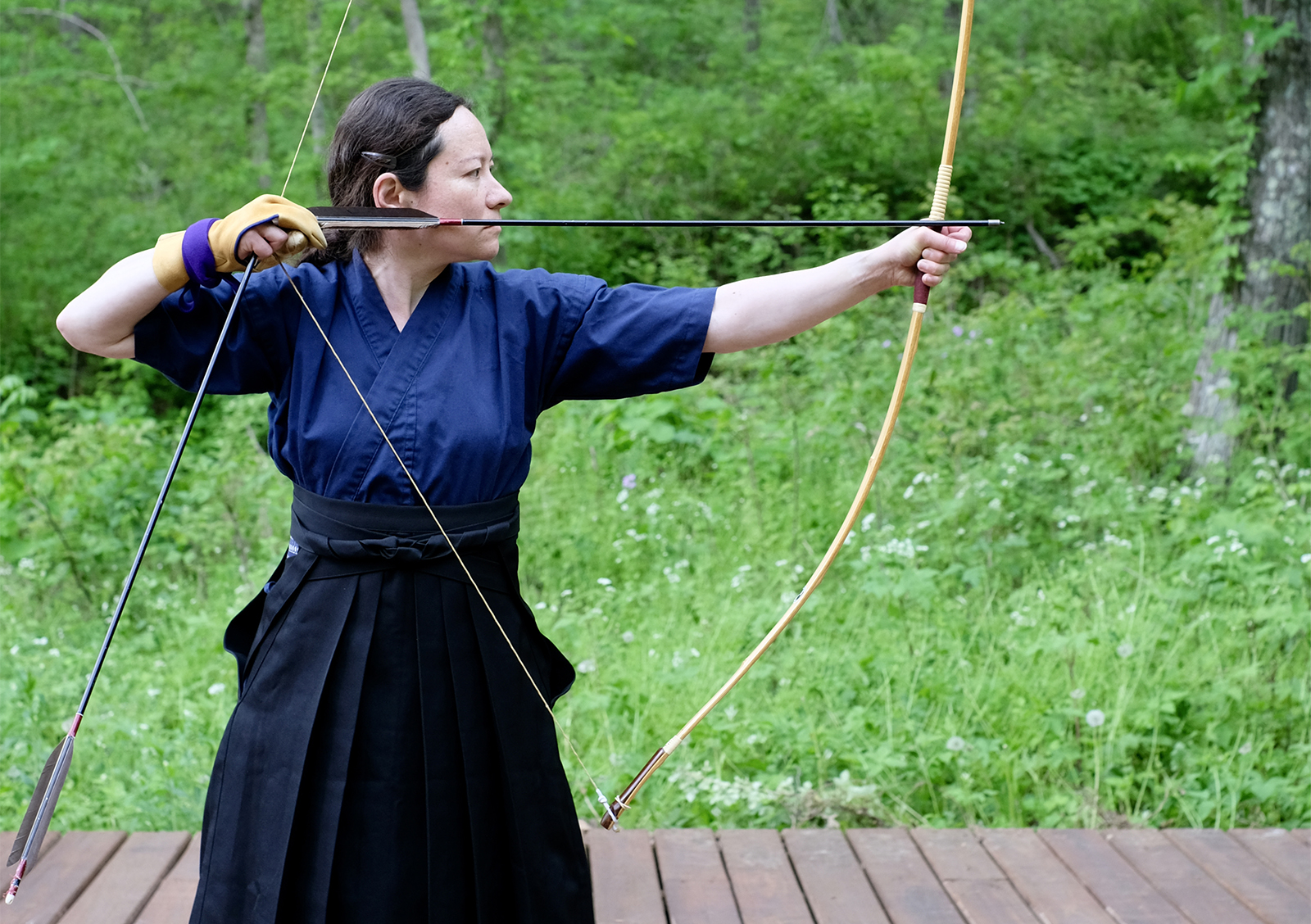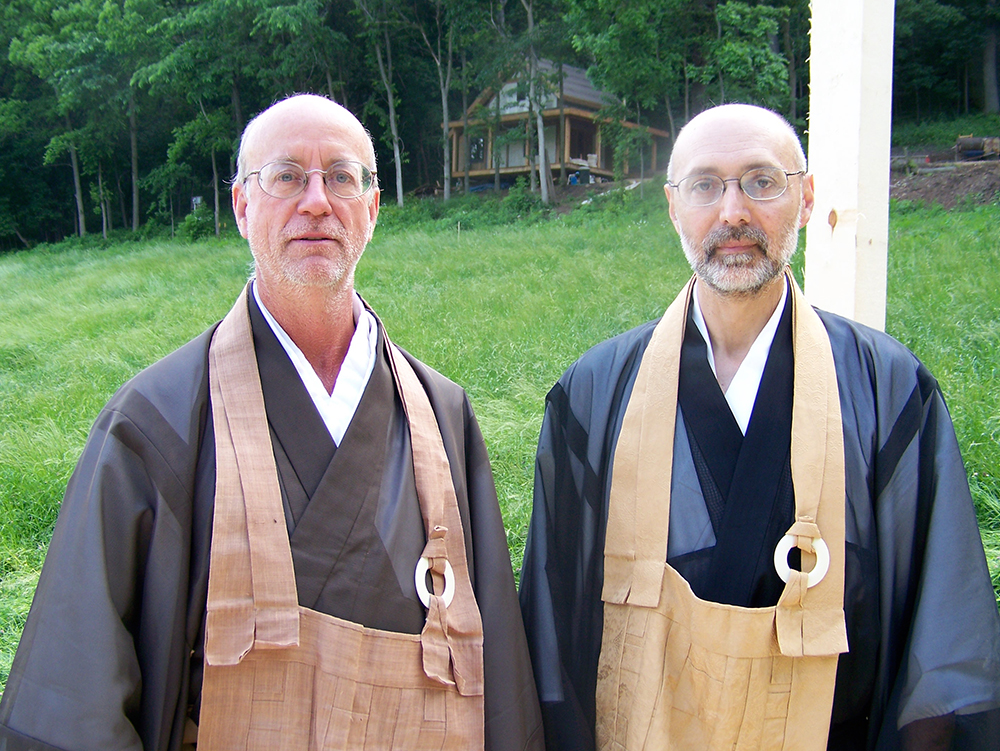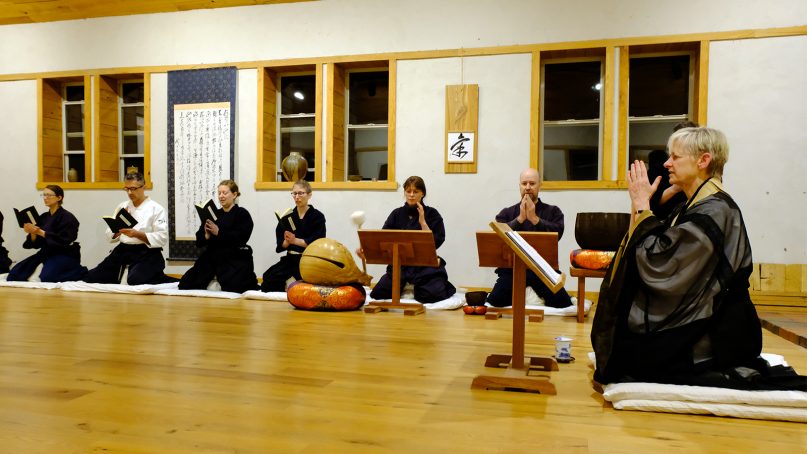(RNS) — In all Zen traditions, meditation is the backbone of the practice. Students sit with a tall spine, hands loosely interlocked and eyes half-closed. At Chosei Zen in Madison, Wisconsin, though, new students are never quite prepared for the rigor of Rinzai Zen, which asks participants to remain motionless for up to 45 minutes — twice a day.
“It was so challenging, exhausting and painful,” said Kristi Crymes, 47, a family doctor in Springfield, Missouri, who attended an intensive retreat at the dojo in October 2017.
“And yet, it was the physical part of it that made me see — this is what my mindfulness practice has been missing all along,” Crymes said.
Rinzai’s embodied, physically intense form of spiritual training goes counter to what many people expect from Zen practice. “It’s not mystical. It’s manual labor,” said the abbot of Chosei Zen, Gordon Hakuun Greene Roshi. “We’re trying to soak this stuff into our bones. If I want to be effective in the world, if I want to bring compassion, if I want to take care of people, I’ve got to get this into my bones so that it’s available at all times and under all circumstances.”

Chosei Zen dojo in Madison, Wisconsin. Photo courtesy of Anita Taylor/Chosei Zen
Abbot Emeritus Kenneth Setsuzan Kushner Roshi calls Rinzai’s all-in approach “the highest form of spiritual training in Zen.” In Japanese, the word for its rigor is “shugyo,” sometimes translated by teachers as “deep spiritual forging” — as in fashioning metal.
“When people first start sitting, they really struggle,” said Ginny Jiko Whitelaw Roshi. (“Roshi,” appended to a person’s name, identifies them as a Zen master.)
But the power of the stillness informs practitioners’ habits, on and off the cushion. “It’s putting a clutch between impulse and action,” said Whitelaw. “The thought can arrive, but it doesn’t get acted upon. The student gains the freedom to act with intention, “rather than just a knee-jerk response to whatever impulse is arising.”
Also in play are posture and breath — the Japanese call it “hara,” loosely translated as abdominal breathing. “There is no Zen without hara,” the saying goes in this tradition, as the technique is considered a necessary tool for the cultivation of “samadhi,” a state of relaxed concentration that helps to generate “ki” or life force.
What gives this lineage its signature stamp from others in the Rinzai tradition is the integration of the martial arts and the fine arts — self-defense skills, archery and Japanese bamboo flute. Martial arts build up ki, while training in the fine arts refines it and meditation grounds it.
Kushner, Greene and Whitelaw, all Zen masters, were students of Japanese American Tenshin Tanouye Rotaishi, an accomplished martial artist and calligrapher who co-founded the lineage — a line of Buddhist teachers who pass down a given practice — with his teacher Omori Sogen Rotaishi.

Anita Taylor practices archery at Chosei Zen dojo in Madison, Wisconsin. Photo courtesy of Anita Taylor/Chosei Zen
In 1972 Tanouye and Omori established Chozen-ji in Honolulu. It was the first Daihonzan temple of Rinzai Zen outside of Japan, and Kushner explained that its form of Zen training was aimed to help bring Zen to the West. Kushner and Greene as well as another teacher based in Hawaii, Wayne Kyoen Honda Roshi, are among Tanouye Roshi’s successors.
Kushner founded the Madison dojo in 1982. Greene followed in 2005 and oversaw the building of a Zen training center on 108 rural acres in neighboring Spring Green. Two years ago the group bought a decommissioned church in downtown Madison and now the group is in the process of converting it into a third dojo. A virtual dojo was added during the pandemic.
In the 1980s, Whitelaw was working at NASA, following her dream of becoming an astronaut, practicing aikido, a Japanese form of self-defense, and sitting zazen as part of her plan. While she failed to make the cut to go to space, she rose through the ranks of NASA, becoming a deputy manager working on the international space station.
But after her marriage ended and a close friend died, Whitelaw made the decision to devote herself full time to Zen training. “It went from being something to make my life better to a deep inquiry about what the heck was my life about and how could I be of service through this instrument.”
In 1996 she became a Zen priest and today she is founder and CEO of the Institute for Zen Leadership, a sister organization to Chosei Zen.
The lineage’s physical demands often attract athletic spirits, such as the Madison dojo head priest, Scott Kou-un Kiel Roshi.
“I was doing meditation independently and then training in martial arts at another dojo” and found Chosei Zen while searching for a place that combined the two, he said. “A lot of aikido is more aikijutsu. They’re teaching you the techniques, but they’re not teaching you how this relates to being a genuine human being.”

Abbot of Chosei Zen Gordon Hakuun Greene Roshi, left, and Abbot Emeritus Kenneth Setsuzan Kushner Roshi. Photo courtesy of Anita Taylor/Chosei Zen
What keeps many students engaged, however, are this tradition’s other challenges, such as the steep learning curve of the Japanese bamboo flute, or shakuhachi. Sustaining a single note can take months to master. “It wasn’t until recently I was able to play the high register more easily,” said student Dave Stahlberg. “It’s the idea of keeping at it, even after fail, fail, fail, fail, breakthrough, fail, fail, fail, fail, fail, breakthrough. I enjoy that. I don’t know why.”
Kate Watters first heard shakuhachi during a three-day online intensive. “It was like this guide, bringing me through this difficult thing with such beauty,” she said. “And so here I am. It’s very frustrating, but I remember that sound and think maybe, just maybe, one day.”
While technique is important and frustration a given, Rinzai Zen is meant to prompt a deeper query of the self. “Who are you?” asked Honda, who teaches shakuhachi at Chozen-ji in Hawaii. “One of the ways in Zen is to cultivate doubt. The greater the doubt, the better. And that doubt has to do with, ‘Who am I?’”
After Kristi Crymes left the Chosei Zen retreat three years ago, she said, “people responded to me differently and I was responding to my environment differently.” Normally shy, she said the training has made her more outgoing and present in her work.
More importantly, it has transformed her work as a physician — rearranging the relationship between thought and action. “The only way to practice medicine responsibly and meaningfully is through this lens,” she said. “It keeps me being who I want to be.”





